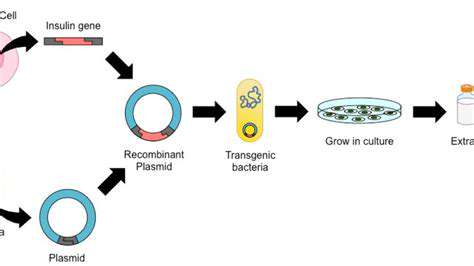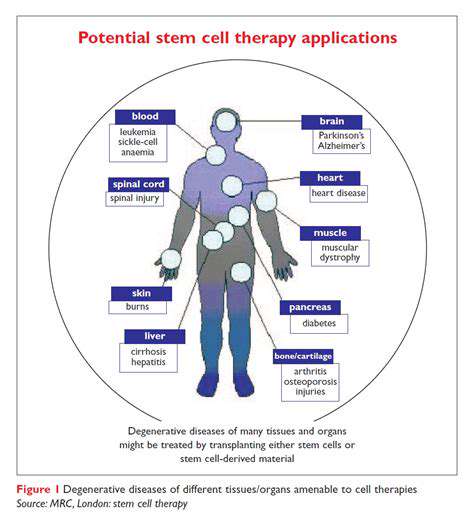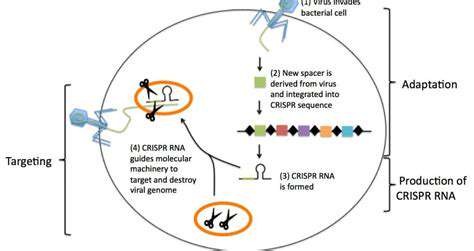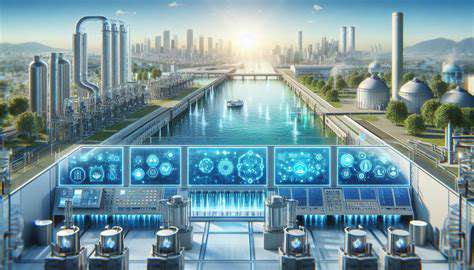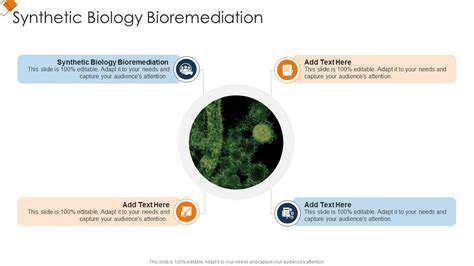Harnessing the Power of Mimicry in Nature
Synthetic biology, at its core, leverages nature's intricate designs to engineer novel biological systems. This approach draws inspiration from the elegant solutions found in natural organisms, from the efficient photosynthesis of plants to the intricate communication networks of social insects. By understanding the fundamental principles governing these natural processes, scientists can adapt and re-engineer them for specific applications in biotechnology. This mimicry allows us to create systems that are more efficient, sustainable, and tailored to specific needs, a significant departure from traditional methods.
Mimicking nature's designs extends beyond simply replicating existing structures. It also involves understanding the underlying mechanisms that drive these systems. This deeper understanding allows us to optimize and modify existing pathways, creating entirely new functionalities. For example, researchers can borrow the principles of bacterial quorum sensing to develop novel communication systems for bio-sensors, or emulate the self-assembly capabilities of proteins to create intricate materials.
The Role of Genetic Engineering in Synthetic Biology
Genetic engineering is the cornerstone of synthetic biology, allowing scientists to precisely manipulate an organism's genetic material. This precise manipulation allows scientists to introduce or modify specific genes, enabling the creation of organisms with novel functionalities. This process is crucial for building robust and reliable biological systems, for example, creating bacteria that can produce specific pharmaceuticals or enzymes for industrial applications.
The ability to precisely modify genetic material allows for a granular level of control over the organism's behavior. This precision is critical in creating organisms that perform specific tasks without unintended consequences. Carefully designed genetic circuits enable organisms to respond to specific stimuli, making them valuable tools for environmental monitoring or bioremediation.
Engineered Metabolic Pathways for Sustainable Production
A significant area of focus in synthetic biology is engineering metabolic pathways to produce valuable products more efficiently and sustainably. Natural metabolic pathways often have limitations, leading to low yields or inefficient production. By optimizing these pathways or introducing entirely new ones, synthetic biology allows for the creation of organisms capable of producing pharmaceuticals, biofuels, or industrial chemicals at a much larger scale and with a reduced environmental footprint. This approach could significantly reduce reliance on fossil fuels and traditional chemical processes.
Bio-Based Materials and Manufacturing
Synthetic biology holds immense potential for revolutionizing materials science and manufacturing. By engineering organisms to produce bio-based materials, we can create sustainable alternatives to petroleum-derived plastics and other materials. This approach offers a pathway towards a more environmentally conscious future, reducing our dependence on finite resources and minimizing pollution. The creation of bio-based materials from genetically modified organisms opens up possibilities for biodegradable plastics, advanced textiles, and even construction materials.
Bio-Sensors and Diagnostics
Synthetic biology has the potential to revolutionize the field of diagnostics and monitoring. Engineered organisms, with the ability to detect specific molecules or environmental conditions, can be used to create highly sensitive and specific biosensors. These biosensors can be used to detect pathogens, pollutants, or even specific biomarkers for diseases. This approach offers a rapid and cost-effective alternative to traditional methods for disease detection and environmental monitoring.
The Ethical Considerations of Synthetic Biology
As synthetic biology advances, it's essential to address the ethical considerations surrounding its applications. The potential for unintended consequences, including the release of genetically modified organisms into the environment, requires careful scrutiny and robust regulatory frameworks. Open dialogue, public engagement, and ethical guidelines are crucial to ensure that synthetic biology is used responsibly and benefits humanity without posing undue risks.
Future Directions and Applications
The future of synthetic biology is bright, promising innovative solutions for diverse challenges. From tackling climate change and developing sustainable biofuels to creating advanced medical therapies and diagnostics, the potential applications are vast and transformative. Ongoing research in areas such as gene editing, metabolic engineering, and synthetic gene circuits will continue to expand the possibilities of this groundbreaking field. Continued collaboration between scientists, policymakers, and the public will be crucial to harnessing the full potential of synthetic biology for the benefit of all.
Designing Novel Biological Systems for Environmental Challenges
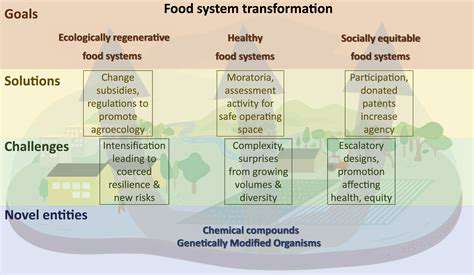
Engineering Cellular Processes
Designing novel biological systems often involves manipulating existing cellular processes to achieve a desired outcome. This could encompass enhancing the efficiency of metabolic pathways, modifying cellular responses to stimuli, or even creating entirely new functionalities within the cell. Understanding the intricate network of interactions within a cell is crucial for effectively engineering these processes. For example, altering the expression levels of specific genes can drastically change the production of proteins, impacting the overall function of the cell. This manipulation allows us to tailor cellular behavior for specific applications, such as biofuel production or drug delivery.
Careful consideration of the regulatory mechanisms controlling cellular processes is essential for the successful implementation of these designs. Incorporating feedback loops and other control mechanisms can ensure stability and predictability in the engineered system. This intricate design process requires a deep understanding of both the molecular mechanisms and the broader system-level interactions within the cell.
Constructing Synthetic Genetic Circuits
Synthetic biology offers a powerful toolkit for constructing artificial genetic circuits within cells. These circuits can be designed to respond to specific stimuli, perform logical operations, or produce desired outputs. The design process involves selecting and combining various genetic components, such as promoters, operators, and ribosome binding sites, to create a specific function. This method allows us to program cellular behavior in a precise and predictable manner.
The complexity of these circuits can range from simple switches to more intricate networks capable of performing complex computations. The ability to engineer these genetic circuits opens up possibilities for creating cells with novel functionalities, such as the production of specific chemicals or the detection of environmental pollutants.
Developing Novel Cellular Components
One significant aspect of designing novel biological systems is the development of entirely new cellular components. This could involve creating artificial organelles or modifying existing ones to enhance their function. For example, we might engineer a new compartment within a cell to concentrate specific enzymes or metabolites, leading to an improvement in a cellular process.
The creation of these novel components requires a deep understanding of cellular structure and function. This includes recognizing how proteins interact to form complex structures and how these structures relate to the overall function of the cell. It also involves innovative approaches to protein engineering, enabling the design of proteins with novel functions or properties that are not found in nature.
Optimizing Biological Systems for Desired Outcomes
Optimizing existing biological systems or creating entirely new ones often requires an iterative design and testing process. This involves carefully evaluating the performance of the system and making adjustments to enhance its efficiency and effectiveness. For example, in biofuel production, optimizing the metabolic pathways of microorganisms can significantly increase the yield of biofuels. This optimization process can involve modifying existing genetic pathways, introducing new ones, or fine-tuning the expression levels of specific genes.
This iterative process often involves sophisticated mathematical modeling and computational tools. Using these techniques, engineers can simulate different design options and predict the potential outcomes before implementing them in real-world systems. This predictive modeling is crucial for streamlining the design process and accelerating the development of novel biological systems.
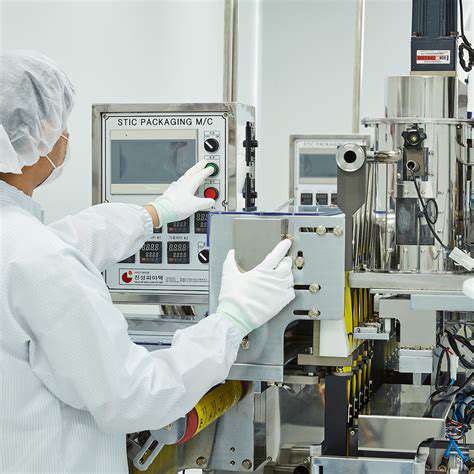
The Future of Bio-Inspired Design and Ethical Considerations
The Convergence of Biology and Engineering
Bio-inspired design, at its core, represents a fascinating convergence of biology and engineering disciplines. This interdisciplinary approach leverages the intricate designs and processes found in nature to inspire novel solutions in various fields, from medicine and materials science to architecture and engineering. By studying the remarkable efficiency and elegance of biological systems, we can gain valuable insights into developing sustainable and innovative technologies.
The intricate mechanisms of biological organisms, from the microscopic level of cellular processes to the macroscopic level of ecosystems, offer a rich source of inspiration for engineers. Mimicking these systems can lead to the creation of more efficient and sustainable solutions, ultimately shaping the future of technology.
Ethical Implications of Synthetic Biology
As synthetic biology advances, it's crucial to consider the ethical implications of manipulating biological systems. One key concern is the potential for unintended consequences, such as the creation of novel pathogens or the disruption of delicate ecological balances. Rigorous safety protocols and careful ethical evaluation are essential to mitigate these risks and ensure responsible development.
Another ethical dimension revolves around intellectual property rights and the equitable distribution of benefits derived from bio-inspired designs. Transparent guidelines and regulations are needed to prevent monopolies and ensure that the fruits of this research are accessible to all stakeholders.
Applications in Medicine and Healthcare
Bio-inspired design holds immense promise in revolutionizing medicine and healthcare. For example, mimicking the structure and function of biological tissues can lead to the development of advanced biomaterials for implants and prosthetics. These biomaterials could integrate seamlessly with the human body, promoting healing and reducing the need for frequent surgeries.
Furthermore, bio-inspired drug delivery systems could target specific cells with greater precision, minimizing side effects and maximizing therapeutic efficacy. This approach could lead to more personalized and effective treatments for a wide range of diseases.
Sustainable Materials and Environmental Solutions
Nature provides a multitude of examples of sustainable materials and processes. Bio-inspired design offers a pathway to develop new materials with enhanced properties and reduced environmental impact. Mimicking the strength and lightness of certain biological structures, such as spider silk, could lead to the creation of novel materials for construction and transportation, reducing our reliance on fossil fuels and minimizing waste.
Furthermore, bio-inspired approaches can help us develop more sustainable agricultural practices and innovative solutions for pollution remediation. Studying how certain organisms break down pollutants could lead to the creation of effective bioremediation strategies.
Bio-Inspired Computing and Artificial Intelligence
The intricate information processing systems found in living organisms offer inspiration for developing new and more efficient computing architectures. Mimicking the neural networks of the brain could lead to the development of advanced artificial intelligence systems capable of learning and adapting in complex environments.
Bio-inspired algorithms and computational models could significantly improve the efficiency and effectiveness of existing computing systems. This could have a profound impact on various fields, including scientific research, data analysis, and problem-solving in general.
Challenges in Implementing Bio-Inspired Designs
While bio-inspired design presents numerous opportunities, significant challenges remain in effectively translating biological concepts into practical engineering solutions. One major hurdle is the complexity of biological systems, which can be difficult to fully understand and replicate. Developing the necessary tools and technologies to accurately model and manipulate these systems is crucial for progress.
Furthermore, the cost of implementing bio-inspired designs, particularly in the early stages of research and development, can be substantial. Securing funding for these projects and fostering collaborations between academia, industry, and government are essential for overcoming these obstacles.
The Future of Bio-Inspired Design: Shaping a Sustainable Future
Bio-inspired design holds immense potential for creating innovative solutions that address pressing global challenges. By studying and mimicking the intricate design principles found in nature, we can develop more sustainable, efficient, and effective technologies. The future hinges on our ability to overcome the scientific, technological, and ethical challenges associated with this field, ensuring responsible and equitable application of these advances.
Through continued research, collaboration, and careful consideration of ethical implications, bio-inspired design can play a pivotal role in shaping a more sustainable and prosperous future for all.




